Here is our list of the best quality control books.
Quality control books are resources that teach quality management strategies. These books offer a practical approach to ensuring the highest standard for your products and services. Examples of quality control books include The Quality Toolbox by Nancy R. Tague and Process Quality Control by Ellis R. Ott, Edward G. Schilling, and Dean V. Neubauer. High-quality products and services increase clients’ trust, loyalty, and advocacy.
Quality control books help leaders manage the workplace, just like sales books, business strategy books, and content marketing books.
This list includes:
- quality control books for beginners
- inspection and quality control books
- quality assurance and control books
- books on statistical quality control
Let’s get started!
List of quality control books
Quality control books cover a wide variety of methodologies that apply to different industries. Here is our list of the best quality control books for entrepreneurs and managers.
1. Quality Toolbox by Nancy R. Tague
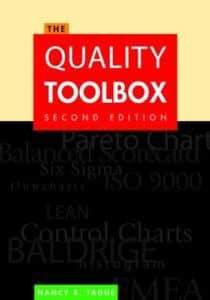
Quality Toolbox details techniques that ensure quality improvement. You will gain access to tools that can help you generate, organize, and test ideas. Other resources can improve your company’s planning, data analysis, and cause appraisal.
The author presents upgrades to existing company productivity techniques. The book has 34 tools with 18 variations you can optimize for your organization. The tools listed in this book come with case studies from real-life organizations.
Quality Toolbox is an easy-to-understand book that requires little guidance. Using the resources in this book will improve your team’s effectiveness.
Notable quote: “We live in a complex world. People and organizations often do not believe they have the time to perform the in-depth analyses required to solve problems.”
Get Quality Toolbox.
2. Root Cause Analysis: The Core of Problem Solving and Corrective Action by Duke Okes

Root Cause Analysis is an important tool in your quality control process. Duke Okes walks you through the analytical process of performing root cause analysis. This book helps readers uncover specific problems in their organizations and correct them.
The processes outlined in this book will help you present data in a way that enables visual thinking. Using visual thinking helps you identify repetitive problems, which often signal systemic lapses in your organization. Systems thinking is a better long-term strategy for quality control. It will help if you focus less on singular major incidents.
Root Cause Analysis uses simple and applicable everyday life examples. The writing is also simple enough that any reader can understand. The book aims to help readers understand why finding the root causes of repetitive problems is important in quality control.
Notable quote: “One major step many organizations fail to take in their program diagnosis is a review of the processes that could have failed.”
Get Root Cause Analysis.
3. Gemba Kaizen: A Commonsense Approach to a Continuous Improvement Strategy by Masaaki Imai
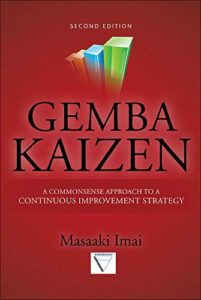
Imai pens one of the best inspection and quality control books. The Japanese words ”Gemba Kaizen” mean continuous improvement. Masaaki Imai’s book, Gemba Kaizen, details a classic approach to improving quality and productivity in the workplace continuously.
The book helps you incorporate cost-effective and sustainable systems in your business operations. In addition, you will learn from many examples of how to operate a profitable organization. The author teaches how to increase productivity, improve quality, and reduce waste.
Imai also teaches the following:
- how to cut non-value-adding activities
- the five steps to organize your workplace
- the roles of supervisors
The author explains the utility of a lean workplace. Imai aims to help you sustain high performance and a culture of excellence.
Notable quote: “People within a company can be divided into two groups: those who earn money and those who do not.”
Get Gemba Kaizen.
4. Quality Audits for Improved Performance by Dennis R. Arter
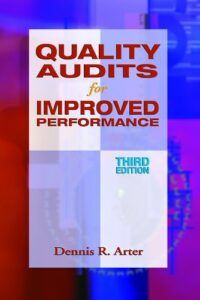
Auditing is an important process for ensuring quality control. Implementing productive internal or external audits requires the techniques in this book. Dennis Arter discusses the history of auditing and the general model used to audit management systems.
The author breaks down the audit process into actionable steps. He then explores the relationship between systems, processes, and products. Understanding both will help you identify loopholes affecting quality.
Arter describes the management principles and phases of the audit process. You will learn how to create an audit plan for your organization and the best way to report your findings. This skill will make interpreting your organization’s needs and challenges easy.
Some chapters of the book focus on remedial and corrective actions. Rectifying these challenges will help you optimize your processes for greater efficiency. Quality Audits for Improved Performance is one of the most recommended quality control books for beginners.
Notable quote: “A summary is performed before the contract is signed, and an audit is performed after the contract is signed.”
Get Quality Audits for Improved Performance.
5. Process Quality Control: Troubleshooting and Interpretation of Data by Ellis R. Ott, Edward G. Schilling, and Dean V. Neubauer
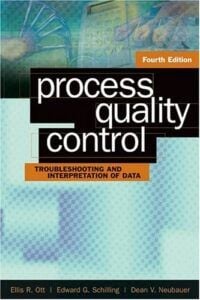
Process Quality Control is one of the most simple yet comprehensive books on books on statistical quality control. This book focuses on improving manufacturing quality. You will learn unique and practical ways to assess and troubleshoot your manufacturing process.
The book explores:
- data interpretation
- statistical process control
- process improvement
You will learn how to collect, process, and analyze data in a usable way. The book explores troubleshooting processes that can improve data gathering, interpretation, and analysis.
Notable quote: ”It is important to learn how much of the product variability is actually inherent in the process.”
6. The New Gold Standard: 5 Leadership Principles for Creating a Legendary Customer Experience Courtesy of the Ritz-Carlton Hotel Company by Joseph Michelli
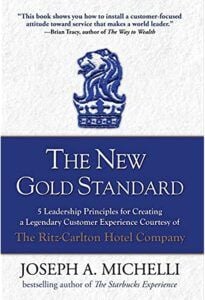
The New Gold Standard shows leadership secrets that made the Ritz-Carlton stand out as a hospitality leader. The book takes you behind the scenes to the executives, staff, and training facilities. Joseph Michelli wrote the manual for hospitality service quality control.
You will learn to understand customers’ ever-evolving needs and detect unexpressed needs. The book shows how to empower employees with proper management and thorough training programs.
You can apply the principles outlined in this book to improve the quality of your product and services. This book’s engaging stories about innovation are part of why it is one of the best quality assurance and control books.
Notable quote: ”In any moment all of us who serve can be Ladies and Gentlemen, just like the guests. I think it is a powerful thing that should not be missed by the wonderful people in this industry.”
7. Quality Without Tears: The Art of Hassle-Free Management by Philip Crosby

Quality Without Tears is for professionals, consultants, and top management. The book serves as a manual for the effective management of company processes. Crosby outlines learn key steps for improving your teams. He recommends management should commit to making quality the first item for every meeting. In his opinion, that is how to create quality awareness within the organization.
He also recommends a quality improvement team to supervise processes and propose corrective actions. The team will also ensure proper measurement of all processes. Measuring processes will help you determine the cost and level of quality.
Crosby’s firm became the largest quality management firm in the world. His academy trains about 20,000 executives every year. Hence, Quality Without Tears is the go-to for learning about statistical quality control.
Notable quotes: ”Quality is free. It is not a gift, but it is free. The ‘unquality’ things are what cost money.”
8. Poka-Yoke: Improving Product Quality by Preventing Defects by Factory Magazine
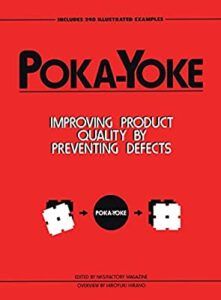
Poka-yoke means mistake-proofing. The technique involves securing your processes with zero defects in your products or services. The principles in this book apply to supervisors, managers, and shop-floor workers. The lessons from Poka-Yoke lead to better product quality and better worker integration.
Poka-Yoke is a simple book that uses illustrations to summarize complex concepts. You will see how the poka-yoke principle applies to different devices, products, and processes. The book demonstrates over 240 examples of mistake-proof improvements in Japanese plants.
Notable quote: ”Defects are wasteful, and if they are not discovered, they disappoint the customer’s expectations of quality.”
Get Poka-Yoke.
9. Lean Production Simplified by Pascal Dennis

Lean Production Simplified is a straightforward guide to lean production systems. The book teaches comprehensive and practical tools from an insider’s perspective. Pascal Dennis explores the origins and principles of lean production.
The text also helps you identify the goals and practical problem-solving processes that support lean production. The author describes how Toyota runs a successful comprehensive manufacturing system.
Notable quote: ”The key to mass production was not the assembly line. Rather, it was the thorough interchangeability of parts and ease of assembly.”
Get Lean Production.
10. Quality Control for Dummies by Larry Webber and Michael Wallace
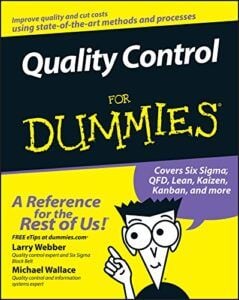
Quality Control for Dummies is one of the best quality control books for beginners. The book discusses how to lead a quality control initiative in detail. This book is a great resource for CEOs, managers, and team members. Larry Webber and Michael Wallace’s guide will help you build your company into an efficient organization with lesser expenses.
Quality Control for Dummies is easy to understand. You will learn the best quality control techniques and methods available in today’s market to implement in your company. The hands-on book covers data collection and setting up quality processes. Webber and Wallace emphasize the importance of choosing the right quality control measures.
The guide covers the following:
- listening to customers on quality issues
- fixing rough problems with Six Sigma
- using QFD to win customers over
Notable quote: ”A company’s quality system strives for the same goals better, faster, and cheaper.”
Get Quality Control for Dummies.
11. The Art of Action: How Leaders Close the Gaps between Plans, Actions, and Results by Stephen Bungay

The Art of Action will help you close the gap between planning, action, and outcomes. You will learn how to generate predictable quality in an unpredictable environment.
Stephen Bunday compares the competitive, risky, and fast-paced nature of work to combat. He uses the book to demonstrate how counterintuitive ancient solutions can help you solve challenges. The author shows the mission command approach and its application in pharmaceuticals and F1 racing cars.
The Art of Action is a thought-provoking read for managers and business leaders. The mission command approach helps you identify a solution’s problems, causes, and elements. You will learn how to build effective and productive organizations using these principles.
The solutions to your organization’s quality control challenges might need a complete culture change. You need to identify your team’s knowledge and alignment gaps and their possible effects on the team. You will also learn the leadership strategies that flow down to your staff.
Notable quote: ”Say what you want people to achieve and, above all, tell them why. Then ask them to tell you what they are going to do as a result.”
Get The Art of Action.
12. Becoming a Category of One: How Extraordinary Companies Transcend Commodity and Defy Comparison by Joe Calloway
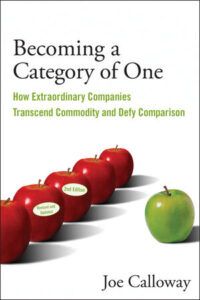
Becoming a Category of One breaks down how great companies perform and how to optimize these processes in your organization. This book has interesting case studies and personal reflections of top business leaders and thinkers.
Differentiation is an important factor for business success in today’s volatile economy. You will learn how to set your business apart and become a market leader.
The principles in this book apply to both multinationals and small-scale enterprises. You will see the effect of innovation in your company and how to change market forces in your favor, starting with quality output.
Notable quote: ”Consistency of performance can be the most powerful differentiator of all.”
Get Becoming a Category of One.
13. The Lean Six Sigma Pocket Toolbook: A Quick Reference Guide to 100 Tools for Improving Quality and Speed by Michael L. George, John Maxey, David Rowlands, and Mark Price
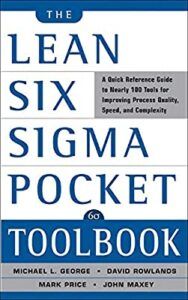
The Lean Six Sigma Pocket Toolbook redefines how to apply different tools for different scenarios. The authors combine the Lean and Six Sigma methodologies to make innovative techniques. You will learn how to improve your organization’s process, speed, and complexity.
With over 100 tools, you will understand effective value stream mapping and how to integrate proper process flow tools. You will learn to walk through ideas by brainstorming, multi-voting, and visual mapping. The Lean Six Sigma Pocket Toolbook shows how to collate customer data, the collection processes, and how to display data.
Notable quote: “Typical categories include the 6 Ms: manpower (personnel), machines, materials, methods, measurements, and Mother Nature (or environment).”
Get The Lean Six Sigma Pocket Toolbook.
14. Practitioner’s Guide to Statistics and Lean Six for Process Improvements by by Mikel J. Harry, Prem S. Mann, Ofelia C. De Hodgins, Richard L. Hulbert, and Christopher J. Lacke
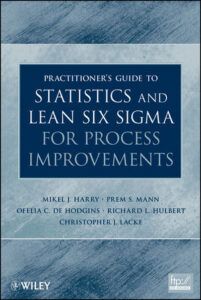
You can use the Six Sigma and Lean Six Sigma processes to improve quality and customer satisfaction. This hands-on book explores the basics of Six Sigma and Lean Six Sigma using data analysis and statistical concepts. You will understand how to work with qualitative and quantitative statistics.
Practitioner’s Guide to Statistics and Lean Six for Process Improvements demonstrates how to:
- think Six Sigma
- apply Six Sigma
- target Six Sigma
- lead Six Sigma
- enable Six Sigma
- deploy Six Sigma
- initialize Six Sigma
Reading this book will show you techniques for problem-solving and improving managerial processes. Apart from managers, undergraduate and graduate students can also benefit from the book. The book is a good reference across different fields, from finance to engineering.
Notable quote: “Most businesses claim to be customer focused; however, these same businesses show little or no evidence to support this claim.”
Get Practitioner’s Guide to Statistics and Lean Six Sigma for Process Improvements.
15. The Art of Application Performance Testing: From Strategy to Tools by Ian Molyneaux
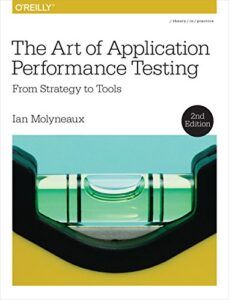
Application performance testing is a systemic approach that affects scalability and performance. Studying this book will enable you to test mission-critical processes before deployment. You will learn to complete the testing process across the lifecycle of each step. The book focuses on incorporating and conducting these tests in different businesses.
The Art of Application Performance Testing will show you how to:
- test local and web applications
- test web services
- set realistic testing goals
- set up tests
- automate the testing process
- interpret test results
With over 15 years of experience, the author also shows the importance of End User Monitoring. His methods will help you recognize and resolve overlooked quality issues.
Notable quote: “The aim of any automated performance testing tool is to simplify the testing process.”
Get The Art of Application Performance Testing.
16. Traction: Get a Grip on Your Business by Gino Wickman
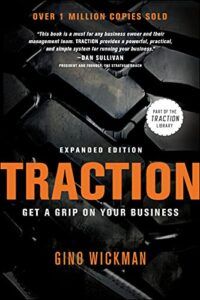
Many business leaders need help with slow growth, low turnover, and internal staff conflict. In Traction, Gino Wickman introduces the entrepreneurial operating system to help you get a better handle on your business. Tens of thousands of companies have achieved success using this method.
You will learn the six major components of your business and how to focus on the important components instead of a hundred others. The tools in Traction are simple yet powerful and show effective ways to run your business. The processes in this book will guarantee you have a focused team and run a profitable business.
Notable quote: “Successful business owners not only have compelling visions for their organizations but also know how to communicate those visions to the people around them.”
Get Traction.
17. The Culture Code: The Secrets of Highly Successful Groups by Daniel Coyle
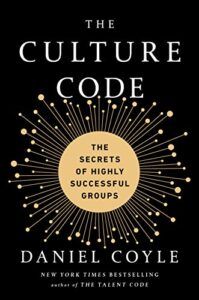
The Culture Code dives into some of the most reputable organizations in the world to uncover what makes them work. Daniel Coyle explores organizations like The US Navy’s SEAL Team Six, the San Antonio Spurs, and IDEO. Their culture shows a building process that facilitates cohesion, cooperation, and high-quality performance.
Coyle investigates diverse success stories and failed ventures. With this technique, he shows you what mistakes to avoid and how to troubleshoot some common challenges. The author also gives important counsel on changing and reforming a toxic culture. The Culture Code shows the roadmap for creating an innovation-driven organization. The tenets in this book are simple to apply.
Notable quote: “The key to creating psychological safety is to recognize how obsessed our unconscious brains are without it.”
Get The Culture Code.
18. Innovating Lean Six Sigma: A Strategic Guide to Deploying the World’s Most Effective Business Improvement Process by Kimberly Watson-Hemehit and Kristine Nissen Bradley
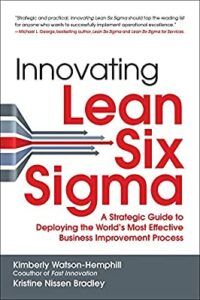
New-age business leaders know the importance of Lean Six Sigma. But they may need help with using the tool in their business operations. Innovating Lean Six Sigma is a great step-by-step guide to explain the idea.
The authors show you how to customize the Lean Six Sigma principles to fit your business needs. You will learn new options, strategies, and solutions within this book.
The book will help you assess your current business model to find out if the model can produce desired business goals. You will also learn to engage your management and staff while developing a new organizational culture.
In all, Innovating Lean Six Sigma aims to make your business more productive and profitable. If the Lean Six Sigma quality management approach interests you, then this book is a must read.
Notable quote: ”If you are not clear about the why, your decisions about who, what, and how are likely to miss the mark.”
Get Innovating Lean Six Sigma.
19. Economic Control of Quality of Manufactured Product by Walter A. Shewhart
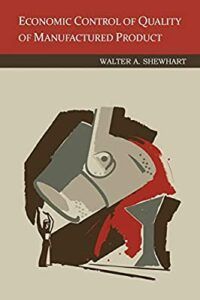
Economic Control of Quality of Manufactured Product combines major tools across statistics, engineering, and economics to create the control chart. This effective tool played a major role in economic development from the 1940s.
Shewhart brings together industrial quality control and statistical principles. He weaves both into an innovative approach to business quality control. This book is a pioneer in solving industrial manufacturing processes with mathematical statistics. You will learn the true definition of quality, statistical control, and the problems associated with data presentation.
Notable quote: “A controlled quality must be a variable quality.”
Get Economic Control of Quality of Manufactured Product.
20. The Essential Deming: Leadership Principles from the Father of Total Quality Management by W. Edwards Deming
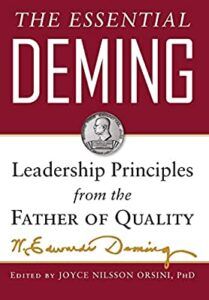
The Essential Deming is a collection of Edward Deming’s articles, papers, and lectures. The collections span a wide range of quality control-related subjects. The New York Times described the author as the high prophet of quality control. He was instrumental in the post-World War II Japanese industrial rise.
His key idea is that managers should systemize quality and operations to help employees perform better. Deming focuses on how poor management can affect an entire organization. He emphasizes the impact of quality processes on products and services. The book aims to improve management by transforming employees into critical thinkers.
Notable quote: “Performance of management should be measured by the potential to stay in business, to protect investors, to ensure future dividends and jobs through the improvement of product and service for the future, not by the quarterly dividend.”
Get The Essential Deming.
Conclusion
Books are a great way to learn new business skills. The authors of quality control books are experts with many years of experience innovating across different industries. Reading quality control books will help you test your company’s processes for improved results. Implementing these tools and principles will expose loopholes in your personnel and processes.
Next, check out our lists of communication books, customer service books, and time management books.
